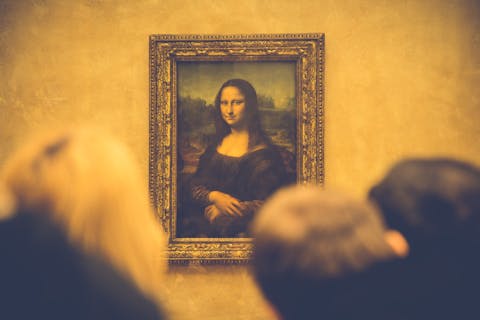Learn About Old Master Paintings
Anyone who is the least bit familiar with the subject of art history will have heard of the term ‘Old Masters’.
painting with angel babies
Since the time in which they lived, many people throughout history have regarded the Old Masters as being the best artists of all time, hence their impressive title. Their impact on Western visual culture and history continues to be strikingly withstanding, many of these artists remaining as household names despite having lived hundreds of years ago. With unprecedented skill and technique, it is no wonder that art enthusiasts and artists alike have sought to study, collect, and emulate the venerable qualities that earned this exclusive group a status of superiority amongst all art.
Who were they?
Although used frequently within the art history and art auctioning realm, the exact definition of the term ‘Old Masters’ can be a bit unclear. In the 18th and 19th centuries, Old Master pieces were generally understood to have been pieces created in the early renaissance, that is around the mid 15th century. However this definition no longer stands as we understand the phrase in modern terms. While some use the phrase to refer to any artist working before the year 1800, some scholars believe this definition to be too vague. Christie’s definition of Old Masters is exclusive to the time in Europe between the 14th and early 19th centuries.

Notable Figures
While technically any artist who was active during the period qualifies as an Old Master, there are certain artists whose talent and skill earned qualified them as epitomic of the Old Masters group. While the amount of great and famous figures in art between this period is too much to even list, one can still appreciate the achievements and impacts of at least a few of them.
Zurbarán
Francisco de Zurbarán, born in 1598 in Fuente de Cantos, was a Spanish painter known for his dark, chiascuratic renderings of religious subjects. Born to a haberdasher, he displayed a proclivity towards art even from a young age, drawing objects from life with charcoal. At the age of 16, he went to work under the apprenticeship of an artist, and became quite successful during his lifetime. Known by some as the Spanish Caravaggio, a high contrast between light and dark are characteristic of his paintings, which appear severe, even ominous in their religious subject.
Holbein
Hans Holbein the Younger was a German artist, born in Augsburg in 1497, who is best known as one of the most influential portrait artists of his generation. Working in both Germany and England throughout his life, his work was highly regarded during his life and he was commissioned by significant historical figures such as Henry VIII to paint their portraits. He is credited with being one of the earliest realists, as his work was known for its uncommon accuracy and likeness to his subjects.
Vermeer
Johannes Vermeer, born in 1632 in the Dutch Republic, was a Dutch Master genre painter best known for his depictions of domestic middle class scenes. Very little is known about his personal life, however Vermeer lived most of his life in Delft and seemingly dedicated himself to his artistic practice, although never going abroad for any form of traditional artistic study. He is most well known for his treatment of light and color, controversially some even attributing his mastery over these aspects of painting to the use of a camera obscura. Regardless, Vermeer is known today as being one of the most skillful and highly regarded artists of modern times.
Goya
Francisco de Goya was born in 1746 in Aragon and is considered to be one of the most important Spanish artists during his time. Born to a lower-middle class family, he began studying art professionally under an apprenticeship at the age of 14, eventually moving to Madrid and becoming immensely successful during his lifetime. After suffering an unknown illness in the late 18th century, he was left deaf after which his work grew darker and more sinister in subject. One of his most disturbingly memorable paintings in Saturn Devouring his Son, 1819-1823.
" With such an undeniably significant influence over their artistic descendants, the Old Masters have been able to posthumously shape the development of art and visual culture across centuries."
From proto renaissance portraits to dutch paintings to pre-industrial British landscapes, the scope of Old Masters works is so broad that anyone can find a sector within the genre that will incite great fascination and appreciation. With such an undeniably significant influence over their artistic descendants, the Old Masters have been able to posthumously shape the development of art and visual culture across centuries. We can only begin to understand their importance and influence as artistic figures and contributors to European society and beyond, as an inspiration from the past and an effect on the future for art as well.

